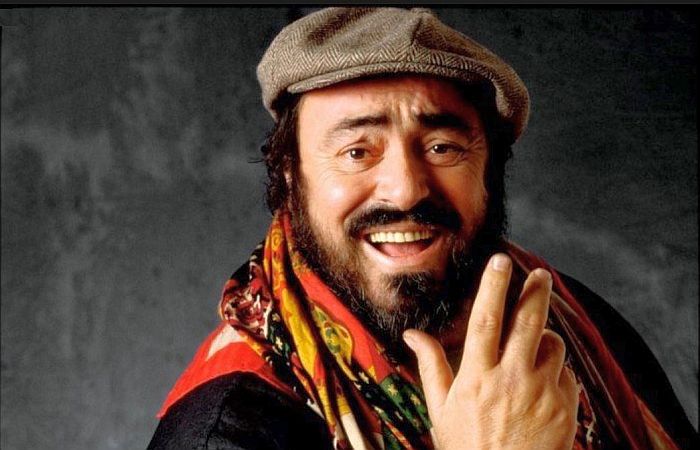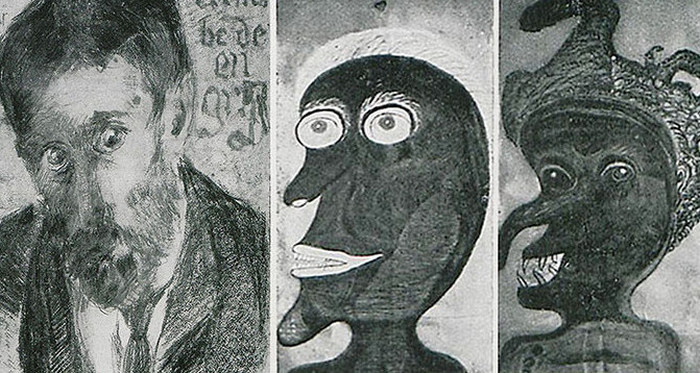GENRES IN CHINESE ART
 Traditional Chinese painting of Go-Hua is considered to be close in spirit and the tools used to calligraphy.
Traditional Chinese painting of Go-Hua is considered to be close in spirit and the tools used to calligraphy.
In China, as a carrier of color used ink tiles, which are ground with water to the desired consistency, as well as water paints with mineral and vegetable pigments.
As the basis of the picture used silk, cotton fabric, sometimes paper. For the spraying of paints use brush from bamboo and wool household or wild animals.
The color scheme of traditional Chinese painting is laconic and consists of three or four restrained colors, rich tonal transitions of one color, usually the color of black ink. The white color of the sheet or fabric creates a conditional airspace and is the actual color, not the emptiness of an unpainted field.Artists create a harmonious and poetic world of nature, plants, animals and birds, using the basic stylistic techniques developed over many centuries. The main styles of traditional painting are gunbi (careful brush) and SEI (rough brush). Gunbi technique is characterized by thoroughness and accuracy in writing details, a clear portrayal of the elements of the picture. In SEI technique, the artist cares more about the transfer of emotional, emotional mood than the exact transfer of details.
Zhen Hua from the genre of the portrait
Ren Wu Hua (translated from kit. man and flowers) – a genre of Chinese painting depicting a portrait of a person or people on the background of nature.
The image of man can be considered the first genre in Chinese painting. The background for it often served as the surrounding nature of man.
Gradually, from the genre of Zhen Wu Hua stood out in an independent genre of landscape, which took a leading role in Chinese painting.
Shidapu-Hua genre of the portrait dignitaries Shidapu-Hua – paintings of dignitaries and aristocrats.
Chun Hua (translated from kit. spring / love / passionate picture) – erotic images representing half-naked and Nude to explicit pornography.
Shan Shui mountains and water
Shan-Shui (translated from kit. mountains and water) – a genre of Chinese painting depicting mountains and waterfalls.
Mountains and water in the minds of the Chinese embodied the most important forces of the Universe – energy and peace, activity and passivity. The early appearance of landscape in Chinese art is associated with a special attitude of man to nature.
In traditional Chinese painting, nature is a subject of study and contemplation. The artist refers to nature, but never copies it. He creates the harmony of the world, which consists of the unity of water, air, stone.
From a bird’s-eye view, with unfolding vertically or horizontally conventional space and high horizon visible mighty mountains, which flow down the river, or are buried in a translucent haze of fog. Man is small and insignificant, but he is inextricably linked with nature and in the works you can see a small figure or human dwellings.
Contemporary Chinese art history divides the genre of landscape to beifan-Shanshui-Huapi (North infinity direction), South-Shanshui-huapai (South infinity direction) and Jiangnan Shanshui-huapai (Jiangnan landscape direction).
Hua-nao birds and flowers
Hua-nao (translated from kit. flowers and birds) – a genre of Chinese painting depicting birds and flowers.
For genre flowers and birds are typified by themes from life plants, birds, bugs. Artists of this direction in their paintings conveyed their feelings and perception of the world, not only through specific artistic solutions, but also through the symbolic meanings of various flora and fauna.
Thus, a special place in this genre was occupied by the image of the “four perfect” (wild plum Meihua, bamboo, pine and chrysanthemum), which symbolized the pure noble people whose friendship and mutual support have passed all tests.
Chrysanthemum is a symbol of sublime loneliness. Pine represents Confucian restraint and endurance, longevity; Lotus-a symbol of inner purity, etc.
Thus, the paintings of the genre flowers and birds were almost always filled with hidden symbolic meaning.
Mo Zhu painting bamboo
Mo-Joo (translated from kit. bamboo painting is a genre of Chinese painting depicting bamboo (from a whole plant to several branches or leaves).
Mo-Zhu is one of the most significant stylistic and thematic directions of the genre flowers and birds.
Bamboo in Chinese paintings is a symbol of inflexibility and perseverance, a person of high moral qualities.
Authentic history painting of bamboo can be traced to the creativity Wen Tong (1018-1079).
Appeal to the painting of bamboo was evidence of the achievement of the peaks of pictorial skill, because the figure had to be used all known in Chinese painting and calligraphy methods of working with a brush. The trunk of bamboo is supposed to do in juancho style (print style) pranks barrel – strokes made in lishu (official style) branches in cursive caoshu, leaves the Caixa.
In XV-XVII centuries for painting bamboo, was developed even more complex graphics system that takes into account a variety of plants and variations in its image, depending on the season, time of day and illumination. Thus, the trunk pattern, in addition to the calligraphic lines, had to consist of strokes that model the nodes of the joints, and complex, connecting with each other, points-knots, designed to convey the roundness of the trunk and the dynamics of plant growth.
Mo-Mei. Plum blossom
Mo-Mei (translated from kit. plum blossom painting) is a genre of Chinese painting depicting a plum blossom.
Mo-Mei is one of the most significant stylistic and thematic directions of the genre flowers and birds.
The initial stage of formation of plum painting as a separate direction of painting correlates with the era of the Five dynasties (907-960).
A branch with pale pink, white or yellow flowers of wild plum Meihua symbolizes a proud man of crystal purity, inflexibility and resistance.
Madani-Hua painting peonies Mudan-Hua (translated from the whale. peony painting) – a genre of Chinese painting depicting peonies.
Mudan-Hua is one of the most significant stylistic and thematic areas of the genre flowers and birds.
Peony is a symbol of human beauty, wealth, abundance, honor and splendor.
Lian-Hua painting of the Lotus Lian-Hua (translated from the whale. Lotus painting) – a genre of Chinese painting depicting the Lotus.
LAN-Hua painting of orchids LAN-Hua (translated from whale. Orchid painting) is a genre of Chinese painting depicting an Orchid.
The Orchid was the embodiment of simplicity, purity and hidden nobility.
Gua-go. Fruits and berries
Gua-go (translated from kit. fruits and berries) – a genre of Chinese painting depicting fruits and berries – one of the directions of the genre of flowers and birds.
Hua Hui flowers and plants
Hua-Hui (translated from kit. flowers and plants) – genre Chinese painting, depicting flowers and plants – one of trends genre flowers and birds.
Ling-Mao feathered and furry
Ling-Mao (translated from kit. feathered and fluffy) – a genre of Chinese painting depicting birds and animals – one of the directions of the genre of flowers and birds.
Lion was a symbol of power and nobility; tiger – a defender from evil spirits; turtle – symbols of longevity; bat, two fish, two butterflies, two Lotus flowers on one stem – symbols of marital happiness; koi carp – a symbol of happiness and success wishes.
Dragon symbolizes power, wisdom and kindness. Sometimes the dragon is depicted holding a magic pearl of wisdom, that represents the greatness, wisdom, and immortality. In China, the dragon with the pearl was considered a symbol of the Emperor, his divine patron. The Phoenix is a symbol of humanity, peace and prosperity, as well as a symbol of the Empress.
Thus, the paintings of the genre feathery and fluffy were almost always filled with hidden symbolic meaning.
Qin-NSNW birds
Qin-nao (translated from kit. birds) – a genre of Chinese painting depicting birds – one of the directions of the genre of flowers and birds.
the crane, symbol of longevity; forty – symbols happy tidings; the Mallard duck is a symbol of conjugal happiness; the rooster symbolizes beauty, fame and good fame.
Chun-Yu. Insects and fish
Chun-Yu (translated from kit. insects and fish) – a genre of Chinese painting depicting insects and fish – one of the directions of the genre of flowers and birds.




